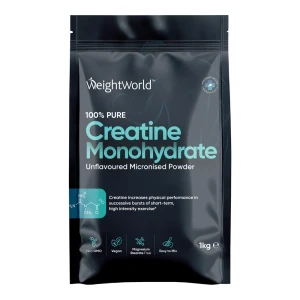
Fitness and Exercise
How to Improve Blood Circulation in Legs: 5 Effective Ways for Better Flow
10 Min. Read 15 Dec 2025
On this page
If you’ve ever experienced that nagging feeling of heavy, tired legs or the sudden sensation of pins and needles, you might be dealing with poor blood circulation. While it’s a common problem, especially as we age, it’s something that can be improved with the right approach. Whether you're leading a sedentary lifestyle, standing for long hours, or simply feeling the toll of time, knowing how to improve blood circulation in legs can make all the difference.
So, let’s dive in and explore why good circulation is so crucial, how you can tell if you have poor circulation, and what steps you can take to keep your legs healthy and full of life.
Why Is Circulation Important?
Blood circulation plays a vital role in keeping your body’s organs and tissues healthy. It ensures that oxygen and essential nutrients reach every corner of the body while removing waste products like carbon dioxide. When blood doesn’t circulate properly, especially to the legs and feet, it can result in discomfort, swelling, and in severe cases, more significant health concerns such as deep vein thrombosis or even ulcers.
Key benefits of good circulation include:
- Supplying oxygen and nutrients to muscles and tissues
- Helping muscles recover after physical activity
- Removing waste products from the body
- Supporting heart and vascular health
Without proper circulation, your legs may not get the nourishment they need, leading to a range of issues.
How to Identify If You Have Poor Circulation in the Legs
Recognising the signs of poor leg circulation is key to addressing the issue before it escalates. Below are some typical signs to be aware of:
- Numbness or tingling: If you frequently experience pins and needles or a sensation of numbness, it could be due to restricted blood flow.
- Cold feet or legs: Reduced circulation can leave your extremities feeling unusually cold.
- Swelling: Particularly around the ankles and feet, swelling is often an indicator that your blood isn’t circulating as it should.
- Varicose veins: Enlarged, twisted veins visible just under the skin may signal poor circulation, especially in the legs.
- Leg cramps or fatigue: Muscles in your legs may cramp or feel tired due to the lack of oxygen and nutrients.
- Slow healing: If cuts or sores on your legs take a long time to heal, it could be a sign of impaired blood flow.
If you’re experiencing any of these symptoms regularly, it’s time to take action and learn how to improve blood circulation in legs. Poor leg circulation isn’t just uncomfortable - it can lead to more serious issues down the line, including muscle cramps, swelling, or even varicose veins. But don’t worry; boosting blood flow is within reach with some easy lifestyle tweaks and helpful tips.
5 Ways to Boost Your Circulation
Improving blood circulation in legs is crucial for maintaining overall leg health and preventing discomfort or potential complications. Fortunately, there are several effective ways to enhance blood flow to your legs that are easy to incorporate into your daily routine.
Let’s break down five proven methods to boost circulation, improve blood flow, and keep your legs in great shape.
1. Exercise Regularly
One of the best ways to boost circulation in your legs is by staying active. Exercise stimulates the heart, helping it pump blood more efficiently throughout your body, including to your legs. Regular movement encourages the muscles in your legs to contract, pushing blood upwards towards the heart, improving circulation and preventing blood from pooling in the lower extremities.
- Walking: A simple, low-impact way to improve blood circulation in legs is by walking. A brisk 30-minute walk each day is enough to increase blood flow, tone your leg muscles, and prevent swelling or discomfort. Walking also helps prevent varicose veins by keeping blood moving through your veins.
- Cycling: Whether on a stationary bike or riding outdoors, cycling is another excellent option. It’s a low-impact exercise that gets your legs moving without putting pressure on your joints, promoting healthy blood flow and reducing the risk of poor circulation.
- Yoga: Yoga combines stretching, strength, and relaxation, which are all beneficial for circulation. Poses such as downward dog or legs-up-the-wall help improve blood circulation in legs by allowing gravity to assist blood flow towards the heart.
Regular exercise not only improves circulation but also strengthens your muscles, which play an essential role in supporting your veins and maintaining good blood flow.
2. Elevate Your Legs
Another simple way to improve blood circulation in legs is by elevating them. When your legs are elevated above the level of your heart, gravity helps blood flow back towards the heart, reducing pressure on the veins and preventing swelling. This method is particularly effective if you spend long periods sitting or standing.
- How to Elevate: You can elevate your legs by lying on a couch or bed and placing pillows under your feet, or simply use a recliner that raises your legs. Try raising your legs for 15 to 20 minutes a few times throughout the day.
- When to Elevate: Elevation is especially useful after a long day on your feet or after exercising, as it helps reduce any swelling or discomfort caused by prolonged standing or activity.
By making it a habit to elevate your legs regularly, you can significantly improve blood circulation in your legs, which helps prevent varicose veins and alleviates the symptoms of poor circulation.
3. Wear Compression Stockings
Compression stockings are a go-to solution for improving leg circulation, particularly for those who suffer from poor blood flow or have to stand or sit for extended periods. These specially designed stockings apply gentle pressure to your legs, helping your veins work more efficiently to move blood back to your heart.
- How They Work: Compression stockings squeeze your legs slightly, which helps prevent blood from pooling in your lower extremities. By enhancing circulation, they reduce swelling, fatigue, and the risk of developing varicose veins.
- Types of Stockings: There are different levels of compression available, ranging from mild to strong. Mild compression is ideal for everyday use or for long trips, while stronger compression may be recommended by a doctor for individuals with more serious circulation issues.
Wearing compression stockings is an easy and practical way to improve blood circulation in legs, particularly for those who lead a sedentary lifestyle or work in environments where prolonged sitting or standing is required.
4. Stay Hydrated
Staying hydrated is essential for maintaining proper blood circulation. When you’re well-hydrated, your blood is thinner, which allows it to flow more easily through your veins and arteries. Dehydration, on the other hand, can cause your blood to thicken, making it more difficult for your heart to pump blood efficiently to your legs and other extremities.
- How Much to Drink: While water needs vary from person to person, it’s generally recommended to drink about 6-8 glasses of water per day. If you exercise or live in a hot climate, you may need to increase your water intake to replace the fluids lost through sweat.
- Benefits of Hydration: Staying hydrated also helps with muscle function, which is important for leg circulation. Well-hydrated muscles contract more efficiently, helping to move blood through your legs and preventing cramping or discomfort.
By simply ensuring you drink enough water throughout the day, you can improve blood circulation in your legs and support your overall vascular health.
5. Stretching
Stretching is a great way to improve blood circulation in legs, especially if you have a sedentary lifestyle. Stretching helps elongate the muscles and encourages blood flow, preventing it from pooling in your legs.
- Why Stretching Helps: Stretching increases flexibility, improves muscle tone, and enhances blood flow. It also helps prevent stiffness and reduces the risk of injury during exercise.
- Simple Stretches for Leg Circulation:
- Calf stretches: Stand facing a wall, place one foot forward, and press your hands against the wall while keeping your back leg straight. Maintain the stretch for 30 seconds, then switch to the other side.
- Leg raises: Lie on your back and lift one leg at a time towards the ceiling. This stretch helps promote blood flow to your legs by engaging the muscles and veins in the lower body.
Incorporating regular stretching into your day, especially during work breaks or after periods of inactivity, can significantly improve blood circulation in your legs, helping you feel more comfortable and energised.
WeightWorld Foot Circulator
Why Choose It?
With its revolutionary EMS & TENS technology, this fitness device is perfect for stimulating tired muscles.
Our satisfied customers love it and have given this device an outstanding 4.5 out of 5 rating.
According to June B -
“It’s certainly making my legs less achy”
If you’re looking for other efficient devices for effective at-home workout sessions, you can try our Vibration Plate. We also offer a wide range of premium fitness supplements and devices if you wish to take your overall fitness game up a notch.
4 Things to Avoid if You Have Poor Circulation
Improving your circulation isn’t just about adopting new habits - it’s also about avoiding things that can worsen blood flow.
1. Sedentary Lifestyle
Sitting for long periods, whether at a desk or in front of the TV, can contribute to poor leg circulation. Lack of movement allows blood to pool in the lower body, increasing the risk of clots and other issues.
- Tip: Set a reminder to stand up and move around every hour.
2. Crossing Your Legs
While it may seem comfortable, crossing your legs can restrict blood flow to your lower extremities. Instead, try sitting with your feet flat on the floor and avoid positions that put pressure on your veins.
- Tip: Use a footrest to help improve your posture and reduce strain.
3. Smoking
Smoking is one of the leading contributors to poor circulation. Nicotine constricts blood vessels, making it harder for blood to flow smoothly. Giving up smoking can greatly enhance circulation and boost overall health.
4. High-Sodium Diet
A diet high in sodium can lead to water retention and swelling, which can aggravate poor circulation. Opt for foods that are low in sodium, and focus on eating a balanced diet rich in fruits, vegetables, and whole grains.
- Tip: Swap processed foods for fresh options to naturally reduce your sodium intake.
Final Say
Learning how to improve blood circulation in legs is all about making small, consistent changes that promote healthy blood flow. Whether it’s as simple as taking a daily walk, elevating your legs, or wearing compression stockings, these adjustments can lead to noticeable improvements over time. Poor circulation may be a common issue, but it’s something that can be managed with a bit of effort and attention.
If you experience persistent symptoms or are concerned about your circulation, always consult with a healthcare professional. They can help you develop a tailored plan to improve blood flow and ensure your legs stay healthy and strong.
FAQs
To improve blood circulation in your legs, try incorporating regular walks, gentle stretches, and leg elevation into your daily routine. Wearing compression stockings can also help. Staying active, avoiding long periods of sitting or standing, and maintaining a balanced diet may support better circulation.
Symptoms of poor circulation in the legs can include cold feet, tingling or numbness, swelling, and discolouration. You might also experience leg pain or cramps, especially after walking or standing for a while. If you're concerned about your symptoms, it's always a good idea to seek advice.
Drinking water regularly can help keep your blood flowing smoothly. Herbal teas like ginger or green tea are often enjoyed for their natural properties. Citrus juices, especially those rich in vitamin C, might also support blood flow, helping you improve circulation in your legs.
Foods like berries, citrus fruits, garlic, and leafy greens are known for promoting healthy blood flow. Spices such as turmeric and ginger are also popular in the UK for their warming properties, which can encourage circulation. Oily fish, rich in omega-3, may also be beneficial.
Vitamin E is often considered helpful for circulation as it promotes healthy blood vessels. Foods such as nuts, seeds, and spinach are rich in this vitamin. Vitamin C can also support the body’s natural ability to improve blood circulation in your legs, as it helps with blood vessel health.
Walking is one of the simplest and most effective exercises for improving blood circulation in the legs. Gentle leg stretches, cycling, and swimming are also great ways to keep your legs active and the blood flowing. Any regular, moderate exercise can support overall leg health.
Sources
- https://www.ncbi.nlm.nih.gov/pmc/articles/PMC3098122/
- https://www.sciencedirect.com/science/article/abs/pii/S0733865105702320
- https://www.ahajournals.org/doi/10.1161/circulationaha.110.948349
- https://www.webmd.com/dvt/choose-compression-stockings
- https://www.ncbi.nlm.nih.gov/pmc/articles/PMC6723555/#
- https://www.ncbi.nlm.nih.gov/pmc/articles/PMC2724242/
- https://www.healthline.com/health/elevating-legs

Next
On this page What Is a Vibration Plate? Why Should I Do Vibration Plate Exercises? Boosts Muscle Activation Accelerates Fat Burning Improves Circulation and Flexibility Low Impact, High Efficiency Top 5 Vibration Plate Exercises for Fat Loss Squats on the...
Most Viewed Articles









